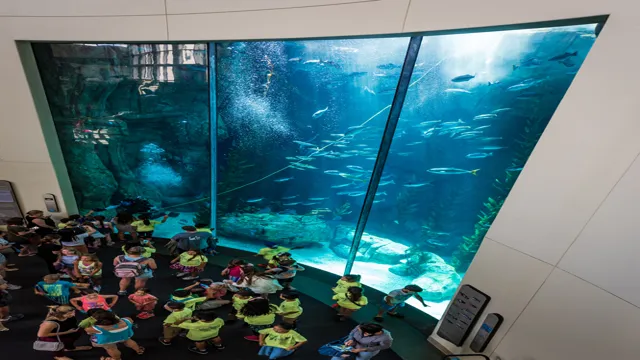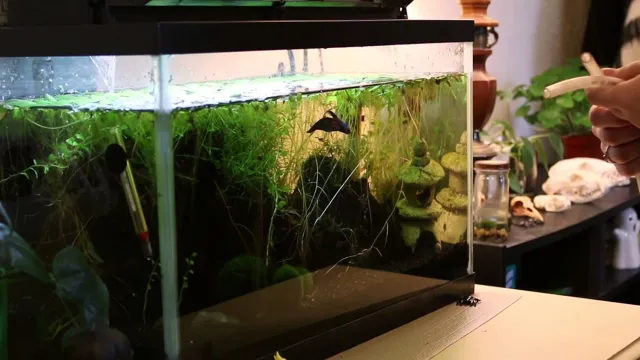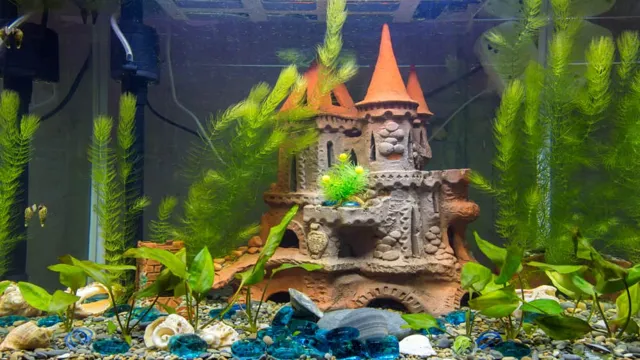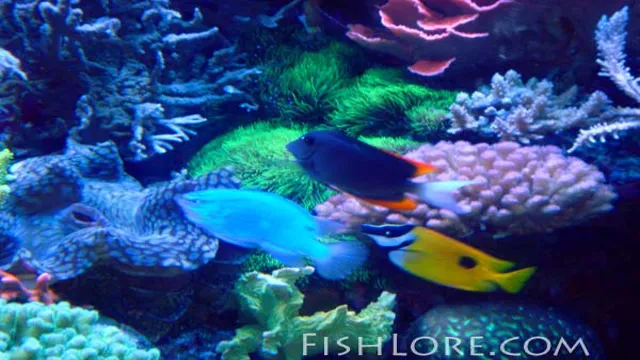Hey there, aquarium enthusiasts! Are you ready to dive into the depths of the ocean and explore the wonders of marine life? If so, the Aquarium of the Pacific is the perfect destination for you! Located in the heart of Long Beach, California, this top-rated aquarium is renowned for its diverse range of aquatic creatures and educational exhibits. Now, the big question is – how do you get there? Well, worry not, as we’ve got you covered! In this blog, we’ll give you a comprehensive guide on how to get to the Aquarium of the Pacific. Whether you’re traveling from within the city or outside, we’ve got all the details covered.
So, buckle up and get ready to embark on a thrilling journey to one of the most mesmerizing aquariums in the world. From directions to parking to public transportation options, we’ve got all the insider knowledge that’ll make your trip hassle-free. You can even explore the surrounding area for exciting activities like shopping, dining, and sightseeing! At the end of your trip, you’ll leave with unforgettable memories and a newfound appreciation for the incredible world beneath the waves.
Don’t let transportation worries keep you from experiencing this fascinating slice of oceanic life – let’s get started!
By Car
If you’re traveling by car to the Aquarium of the Pacific in Long Beach, there are a few routes you can take! If you’re coming from Los Angeles, exit the I-710 S and turn right onto Shoreline Drive. If you’re coming from Orange County, take the I-405 N to the I-710 S and follow the same instructions. Once you’re on Shoreline Drive, the aquarium will be on your right-hand side.
There are a few different parking options, including a parking lot and a parking garage. The parking garage is located under the aquarium, making it a convenient option if you want to avoid the sun. From the parking lot or garage, it’s just a short walk to the aquarium entrance.
As always, be sure to check for traffic before you hit the road and allow for extra time in case you encounter any unexpected delays. Safe travels and enjoy your visit to the Aquarium of the Pacific!
Using GPS or Maps
When it comes to using GPS or maps, traveling by car can be extremely beneficial. Not only does it allow you to have more control over your transportation, but it also gives you the opportunity to explore different routes and take in the scenery along the way. With the help of GPS or maps, you can easily plan your route and avoid traffic, detours, or other delays that can slow you down.
Plus, you can use voice-guided navigation to keep your focus on the road and ensure that you don’t miss any turns or exits. With just a few taps on your smartphone, you can access a wealth of information about local attractions, restaurants, and points of interest that you may not have known about otherwise. Whether you’re traveling for business or pleasure, using GPS or maps while driving can make your journey more enjoyable and stress-free.
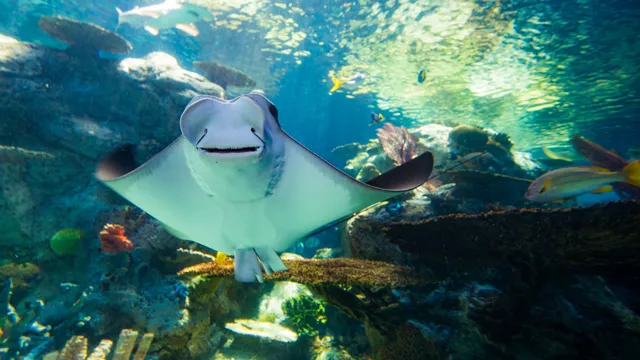
Parking Options
If you plan on traveling to a new location by car, you’ll want to consider your parking options ahead of time. Depending on your destination, you may be able to park on the street or in a parking lot. Street parking is often limited and can be difficult to find, especially in busy areas.
Many cities have time limits on how long you can park on the street, so it’s important to read signs carefully. Parking lots are a good option if you don’t want to worry about finding a spot, but they can be expensive, especially in popular tourist areas. Some hotels offer free or discounted parking for guests, so be sure to ask about this option if you’re staying overnight.
Another option to consider is using a parking app, like Parkopedia, that can help you find the closest and cheapest parking options. By planning ahead and weighing your options, you can make your parking experience stress-free and enjoyable. (See Also: How to Change Sand to Gravel in Aquarium: A Step-by-Step Guide)
By Public Transportation
If you want to visit the Aquarium of the Pacific but don’t want the hassle of dealing with traffic and parking, public transportation is a great option. You can take the Metro Blue Line train to the Downtown Long Beach Station, which is just a short walk from the aquarium. The station is conveniently located near many other Long Beach attractions as well, such as the Queen Mary and the Pike Outlets.
Alternatively, you can take a bus to the aquarium, with several different routes stopping nearby. Check the Metro website for schedule information and fare prices. With public transportation, you can relax and enjoy the sights without the stress of driving, and the added bonus of reducing your carbon footprint.
Using the Metro Blue Line
If you’re looking for a convenient and affordable way to travel around Los Angeles, then the Metro Blue Line is the perfect option for you. Whether you’re a tourist exploring the city or a local commuter, the Blue Line provides quick and easy access to some of the most popular destinations in the area. Plus, with affordable fares and frequent service, it’s super budget-friendly too! The Blue Line runs from Long Beach to downtown LA, with a total of 22 stations along the way, including stops at popular attractions such as the Staples Center, LA Convention Center, and the Aquarium of the Pacific.
So next time you need to get around the city, consider taking the Metro Blue Line for a hassle-free and enjoyable experience!
Bus Transportation Options
When it comes to public transportation, taking the bus is a great option for getting around town. Many cities have local buses that run frequently and can take you to popular destinations like shopping centers, schools, and parks. Plus, using public transportation is an eco-friendly choice that helps reduce traffic congestion and air pollution.
Before hopping on the bus, make sure to check the route schedule to make sure your destination is covered. Some cities also offer bus passes that can save you money if you plan to ride frequently. Overall, taking the bus is a reliable, affordable, and convenient way to get around town while also helping to preserve the environment.
So why not give it a try?
Waterfront Shuttle
The Waterfront Shuttle is a great way for visitors, locals, and commuters to travel around the waterfront area in an environmentally-friendly and hassle-free way. The shuttle operates on a regular schedule throughout the day, making stops at popular waterfront destinations like Fisherman’s Wharf, Pier 39, and the Ferry Building. With easy-to-use public transportation options like buses, trolleys, and cable cars, it’s a breeze to get around the city and explore all that San Francisco has to offer.
Plus, it’s an affordable option that won’t break the bank. Whether you’re looking to take in the sights and sounds of the waterfront or simply need to get from point A to point B, the Waterfront Shuttle is an excellent choice. So why not hop on board and see where it takes you?
By Bike or On Foot
If you’re planning a visit to the Aquarium of the Pacific, there are several ways to get there. One of the easiest and most eco-friendly ways is by bike or on foot. The aquarium is conveniently located near several bike-friendly streets and bike paths, making it a great destination to reach on two wheels. (See Also: How to Make a Waterfall Aquarium: Step-by-Step Guide for Fish Lovers)
Additionally, Long Beach has a bike share program, which allows you to rent a bike by the hour or day. If you prefer to walk, the aquarium is within walking distance of several Long Beach neighborhoods. You can enjoy a scenic stroll along the waterfront, passing by Shoreline Village and various shops and restaurants along the way.
Whatever mode of transportation you choose, reaching the Aquarium of the Pacific by bike or on foot is a great way to reduce your environmental impact and enjoy the beautiful sights of Long Beach.
Bike Parking Options
Bike parking options have become increasingly important in cities and urban areas as more people choose to travel on foot or by bike. There are a variety of bike parking options available, including traditional bike racks, bike lockers, and bike shelters. Traditional bike racks are the most common and can typically be found on sidewalks, in bike lanes, or at public transportation stations.
They are simple and easy to use, typically holding one or two bikes. Bike lockers, on the other hand, are more secure and offer protection from theft or weather. They are typically found in public garages or along bike paths and can hold one or more bikes.
Bike shelters are a newer option and provide a covered, protected space for bikes. They can be found in public areas or as part of a building’s infrastructure. With the increasing popularity of biking and walking as transportation options, it’s important for cities to provide safe and accessible bike parking options for their residents and visitors.
By opting to travel on foot or by bike, we can reduce our carbon footprint and help make our communities more sustainable.
Walking Directions
When it comes to getting around town, biking and walking are both great options. Not only are they eco-friendly and budget-friendly, but they also give you a chance to enjoy the sights and sounds of your city at a leisurely pace. Whether you choose to bike or walk, there are many tools available to help you plan your route and get to your destination safely.
One of the most popular options is Google Maps, which provides detailed walking and biking directions for cities all over the world. Simply enter your starting point and destination, and Google Maps will show you the best route, complete with turn-by-turn directions and estimated travel times. So next time you’re looking for a fun and healthy way to get around town, consider biking or walking – and don’t forget to use Google Maps to plan your route!
Conclusion
In conclusion, getting to the Aquarium of the Pacific is like navigating through a school of fish – it can be a bit overwhelming, but with the right direction, you’ll swim your way there in no time! Whether you’re taking the scenic route along the coast or navigating through the heart of Long Beach, just remember to keep your eyes peeled for the iconic blue whale sculpture and friendly marine life enthusiasts to guide you on your aquatic adventure. So dive right in and let your journey to the Aquarium begin!” (See Also: How to Lower Your Aquarium pH Level: Tips and Tricks for Optimal Water Conditions)
FAQs
What transportation options are available to reach the Aquarium of the Pacific?
Visitors can take the Metro blue line, bus, water taxi, or drive their own vehicle to reach the aquarium.
Is there parking available at the Aquarium of the Pacific?
Yes, there is ample parking available at the aquarium for a fee.
What are the operating hours of the Aquarium of the Pacific?
The aquarium is open every day from 9:00 AM to 6:00 PM, except for select holidays and special events.
Are there any discounts available for admission to the aquarium?
Yes, there are discounts available for seniors, students, and military members. Additionally, visitors can save by purchasing tickets online in advance.
What types of marine life can visitors expect to see at the Aquarium of the Pacific?
The aquarium is home to a wide variety of marine life, including sharks, sea lions, otters, penguins, and many species of fish and corals.
Are there any educational programs or exhibits available at the Aquarium of the Pacific?
Yes, the aquarium offers a number of educational programs and exhibits, including behind-the-scenes tours, animal encounters, and interactive exhibits for children.
Can visitors bring their own food into the Aquarium of the Pacific?
Outside food and beverages are not permitted inside the aquarium, but there are several on-site dining options available for visitors.

